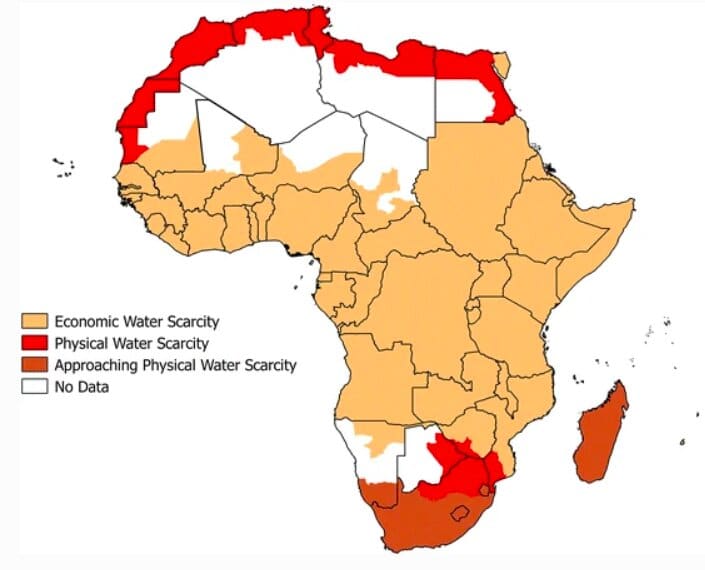Water scarcity refers to the situation of lacking access to safe drinking water. UN's sustainable development goal (SDG) 6 has shown that access the affordable, clean and safe drinking water is a fundamental human right. The growing lack of water can be shown in two ways, economic and physical water scarcity. Economic water scarcity refers to the institutional failings that prevent people from accessing safe water, such as poor infrastructure and lack of planning from a politically unstable government. Physical water scarcity literally means the lack of water supply which may result from seasonality and climate change. Unfortunately, Africa is struggling with both types of water scarcity due to many factors such as government failure, climate change and especially the rapid population growth with a rate above 2% annually. Water scarcity is predicted to reach a dangerously high level by 2025. By now, 1 in 3 Africans is facing water scarcity. In sub-Saharan Africa, 400 million people have no access to safe water, and the average time for daily water use is 30 minutes.

Figure 1: The overall water risk of Africa 2019.
According to Aqueduct, many African countries face extremely high water risks. This metric considers multiple factors, including vulnerability to droughts and floods, seasonal variability, and water stress.
There is complexity in understanding water scarcity. Figure 1 is a good map showing the geography of Africa's overall water risk. The good part is this metric considers multiple factors due to the limitations of other more popular metrics such as the Water Stress Index and Withdrawl-to-availability ratio (Damkjaer and Taylor, 2017). According to the authors, Africa's agricultural sector will confront significant water-related climate risks in the future. As 90% of sub-Saharan Africa's rural population relies on agriculture as their primary source of income and more than 95% of the region's agriculture is dependent on rainfall, one of Africa's poorest groups is increasingly vulnerable to climate and water-related dangers.
Similarly, figure 2 is a map showing areas in Africa that face either physical or economic water scarcity mapped by The International Water Management Institute (IWMI), as well as areas that are expected to approach physical water scarcity. This creates a better overview for analysing regional threats faced by different African countries. According to the United Nations Economic Commission for Africa, arid regions of the continent, primarily in North Africa, face frequent physical water scarcity. In contrast, Sub-Saharan Africa mainly faces economic water scarcity. Indeed, the latter region has adequate physical water levels, owing to an abundant, albeit highly seasonal and unevenly distributed, rainwater supply. However, access to water in this region is limited due to poor infrastructure, resulting in primarily economic rather than physical water scarcity.
Overall, there can be many ways of representing water scarcity in Africa, depending on the user's preferred metrics. Different African countries are facing different types and scales of threats. Therefore, in later posts, I will discuss each topic under particular countries or regions as case studies to be more specific.


Comments
Post a Comment